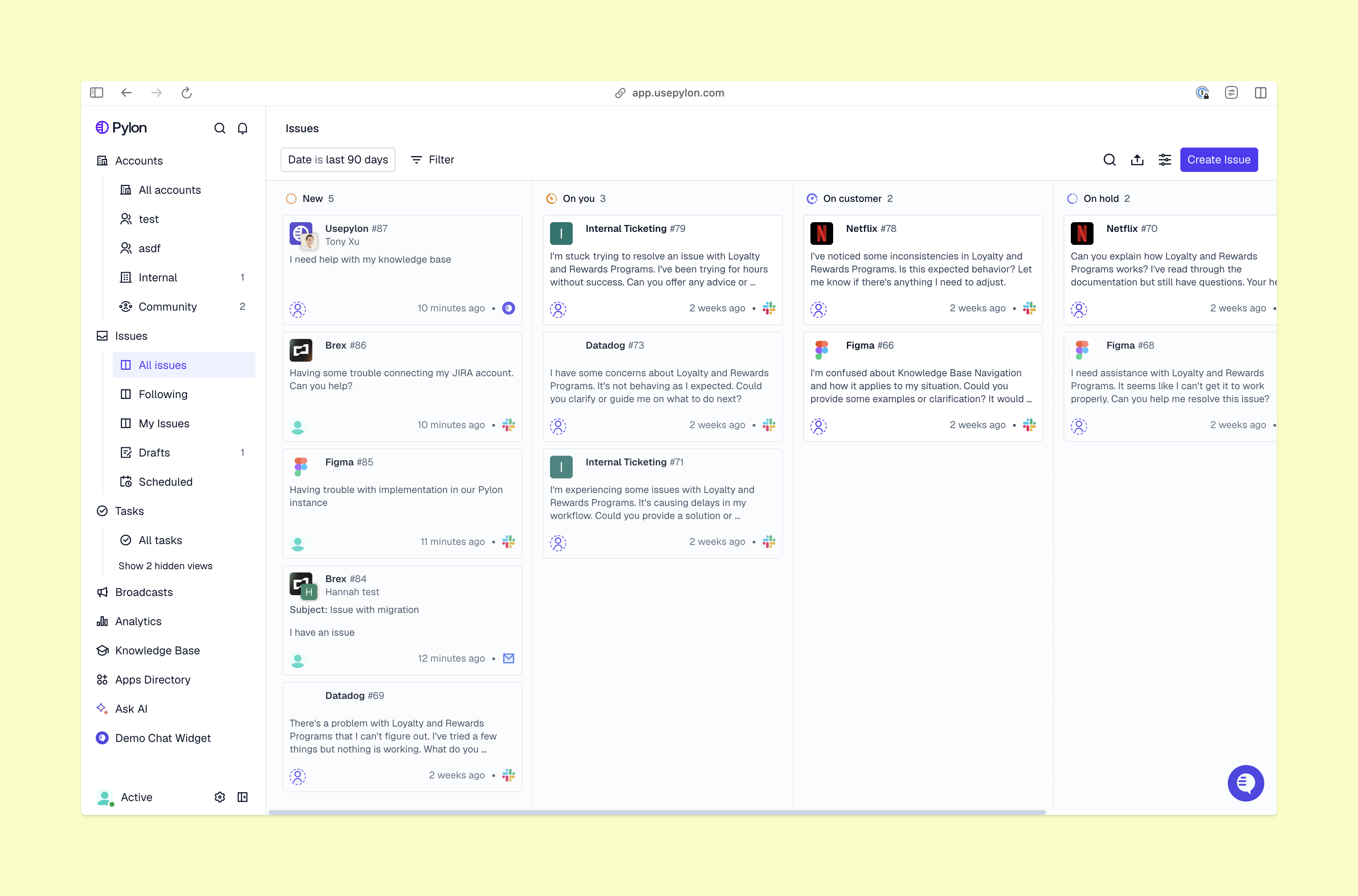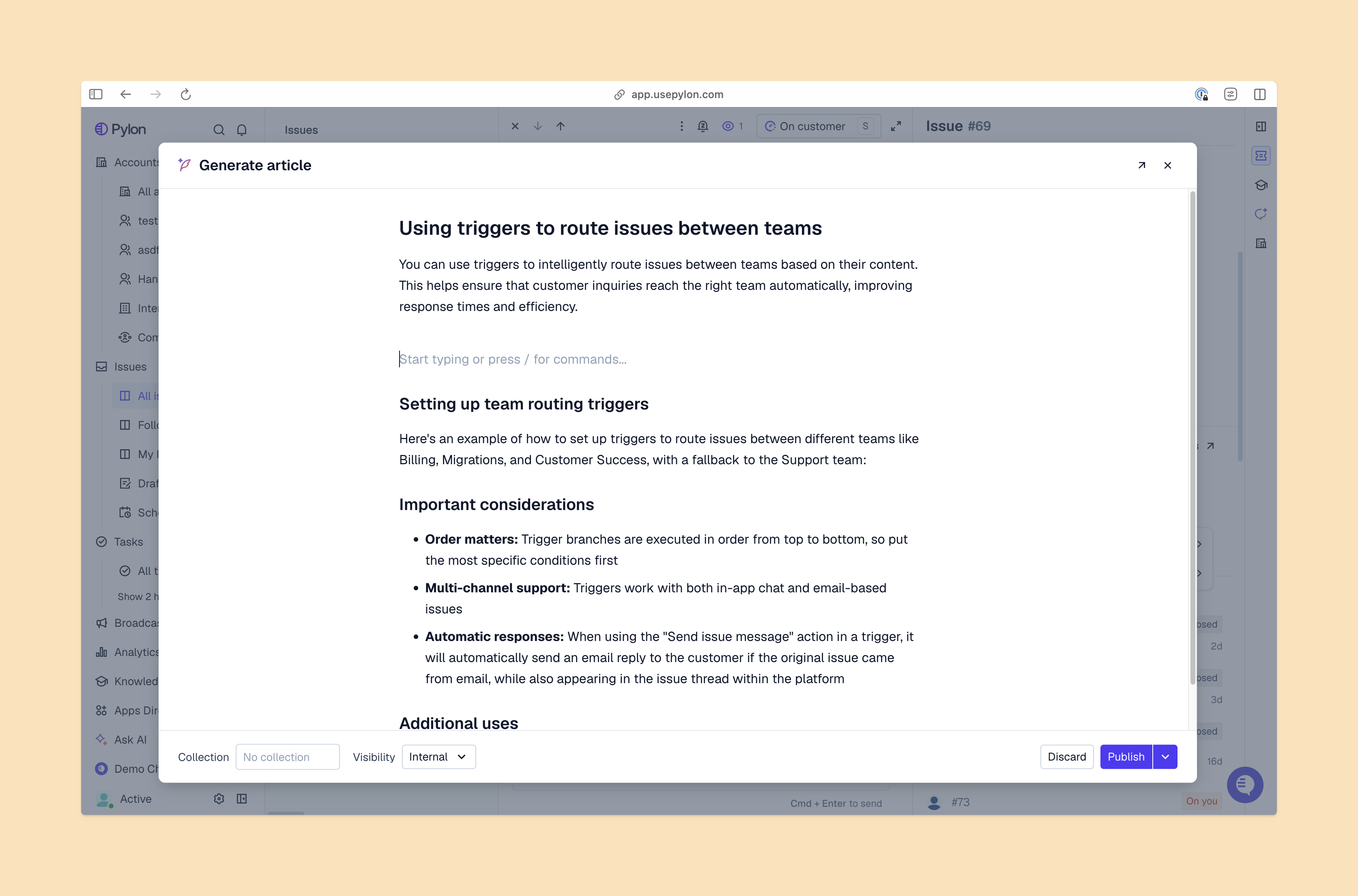How to Build a Customer Success Playbook: Guide and Examples
Learn how to build a winning customer success playbook. Find out what elements to include, and discover tips for boosting retention and avoiding mistakes.
Customer support teams spend their days balancing urgent tickets with long-term account management. Teams are responsible for fielding daily questions and issues while staying aligned with a broader customer success strategy.
Without a clear plan, your team has to fumble through responses as best they can. A customer success playbook replaces ad-hoc approaches with concrete guidelines. It outlines what to do in specific situations and who should be involved in key decisions. By setting expectations up front, the playbook helps your team react with confidence and improve customer satisfaction.
The following guide explores what a customer success plan looks like and the elements it typically includes. We’ll also explain how to create one, and discuss a few common mistakes that hold teams back from delivering consistent support experiences.
What’s a Customer Success Playbook?
Front-line teams often deal with situations that repeat themselves but aren’t identical: A customer who once relied on your product suddenly disengages for unknown reasons. A new decision-maker starts to question whether your service is worth the cost. Or on a larger scale, a product update leaves users frustrated and looking for help.
All of these situations are much easier to handle when your team has the right guidance. A customer success playbook — sometimes called a retention playbook — is an operational guide that explains what to do in common situations throughout the user journey. It provides clear, step-by-step procedures, along with more general guidelines for handling customer conversations.
This strategy has grown in popularity as SaaS businesses move from one-off transactions to long-term subscription models. Customer loyalty has become the metric that matters most, and a playbook gives teams a way to operate at scale while maintaining support quality.
This type of playbook also gives managers a standard to follow when training or coaching team members. Success managers can draw from documented procedures and refine them over time. Plus, adjacent teams can use it to get a better shared view of handoffs and responsibilities.
Common Types of Customer Success Playbooks

These playbooks come in a variety of formats, and can be designed for specific purposes. Here are some of the most common types:
- Onboarding establishes the path from contract signature to first value, including setup and early check-ins.
- Low engagement outlines how to respond when a customer’s product usage dips, such as with targeted outreach or role-specific training.
- Escalation establishes severity levels, communication cadences, ownership, and a path to resolution.
- Feedback captures requests, prioritizes them, and closes the loop with updates or alternatives.
- Advocacy covers how to convert satisfied clients into reviewers or case study partners.
- Renewal and expansion prepares your team for contract discussions by linking product outcomes to business goals.
- Quarterly review standardizes how to highlight risks and align on future plans with executives.
Key Elements to Include in Your Customer Success Playbook
A playbook is most effective when it’s clear and practical. The following components help it provide real value:
- Objective and scope. Consider adopting proven best practices for customer success strategy to keep your playbook consistent with your long-term goals.
- Trigger conditions. Your playbook should state what signals, such as a drop in logins or an upcoming renewal, should trigger specific actions.
- Actions and timelines. You’ll need to outline steps with specified ownership and timing, so responsibilities are understood in advance.
- Reusable materials. Templates and dashboards give teams ready-made tools, instead of making them generate new material each time.
- Outcome metrics. Make your measures of success clear, whether you focus your analytics on faster onboarding or improved survey scores.
- Review cadence. It’s important to review every section of your playbook on a regular basis, to keep it on track with product changes and evolving user needs.
How to Build Your Customer Success Playbook
The next challenge is deciding how to assemble those components into a customer success plan template your team can actually use. The most effective playbooks take time and effort to build. But following these core steps can streamline the process:
- Journey mapping. First, you’ll document the key customer success stages from onboarding through renewal, and note signals that tend to indicate risk or opportunity.
- Metrics selection. Next, you’ll choose specific and trackable KPIs that will trigger actions, such as: “Send a follow-up when a new account has fewer than three active users after 30 days.”
- Workflow automation. Automation is essential for implementing your playbook. For example, you might link product analytics and CRM fields, so triggers activate reliably and results are constantly tracked.
- Pilot testing. It’s usually a good idea to build and test your playbook in stages. Most companies benefit from setting up support processes slowly and carefully.
- Team onboarding. Now, it’s time to get the whole team involved. Offer walkthroughs and training, and make your playbook easy to access.
What to Avoid When Creating Your Customer Success Playbook

Not every playbook delivers. If you want yours to drive outcomes, watch out for the following mistakes:
- Steps are too complex. Dense instructions create hesitation and confusion, while simplicity makes it easy for your team to actually follow the playbook.
- Triggers are vague. Actions need measurable signals, or they won’t happen consistently.
- Sections are written in isolation. Your playbook has to make sense as a whole, and reflect your company’s support and product realities.
- Templates are too rigid. Your playbook should be flexible enough to accommodate product updates and customer changes.
- Diverse situations are lumped together. You can’t account for every possibility, but consider what factors should drive your success team to take different actions. Enterprise accounts often require different steps than smaller users, for instance.
It’s much easier to avoid these problems when you have the right tools. Pylon offers Notebooks and knowledge base support to help your team design workflows for your playbook that are structured well and scale effectively.
4 Examples of Customer Success Plays
To make your playbooks come to life, you should provide practical templates, or “plays”, that your team can use in common interactions. These customer success playbook examples illustrate how you can structure triggers and actions for recurring scenarios.
Onboarding Play
The onboarding process guides new clients to their first meaningful outcomes as quickly as possible. Your customer success onboarding playbook might include the following instructions:
- On account creation, send an immediate welcome message with contacts and expectations.
- Hold an onboarding session within three days to cover setup and integrations.
- Provide a two-week checklist with milestones.
- Review outcomes at day 21, and establish new targets.
Low Engagement Play
Low engagement plays aim to restore product usage when activity drops below a designated level. These plays combine timely outreach with tailored guidance for what to do if recovery doesn’t occur. For example:
- Alert the assigned manager and provide an account brief.
- Deliver outreach tied to customer goals.
- Schedule a role-specific training session.
- Escalate to an executive sponsor if engagement doesn’t recover within one month.
Escalation Play
Escalation protocols provide structured and transparent ways to handle severe issues. The objective is to contain problems quickly, then rebuild trust once the issue is resolved. Here’s what that can look like:
- Form a response group that includes product and account management teams.
- Publish updates on a set cadence until resolution.
- Provide affected customers with direct access to response channels.
- After the ticket is closed, share a remediation summary with next steps.
Quarterly Review Play
Quarterly reviews create a forum for maintaining executive alignment and demonstrating value. These sessions often highlight results and align priorities for the next phase of the partnership. This type of plan might instruct your team to:
- Collect outcome data and product usage one week ahead of the meeting.
- Develop a presentation detailing results, risks, and upcoming opportunities.
- Engage leadership with evidence of ROI.
- Record and log commitments in the CRM.
Putting Your Customer Success Playbook Into Action
The right customer success plan can transform recurring challenges into confident plays. Setting a clear standard for customer-facing teams eases pressure during high-stakes moments, and it gives companies a reliable way to respond at scale. The result is higher satisfaction and steadier retention — which both contribute to stronger growth.
Treat your customer success playbook as a living, breathing document. Feedback and regular refresh cycles keep each step relevant as customer expectations shift and products evolve. And take advantage of automation: AI-powered customer success tools can reduce response times dramatically, letting your team give their full attention to each interaction.
Pylon is the modern B2B support platform that offers true omnichannel support across Slack, Teams, email, chat, ticket forms, and more. Our AI Agents and Assistants automate busywork and reduce response times. Plus, with Account Intelligence that unifies scattered customer signals to calculate health scores and identify churn risk, we're built for customer success at scale.









